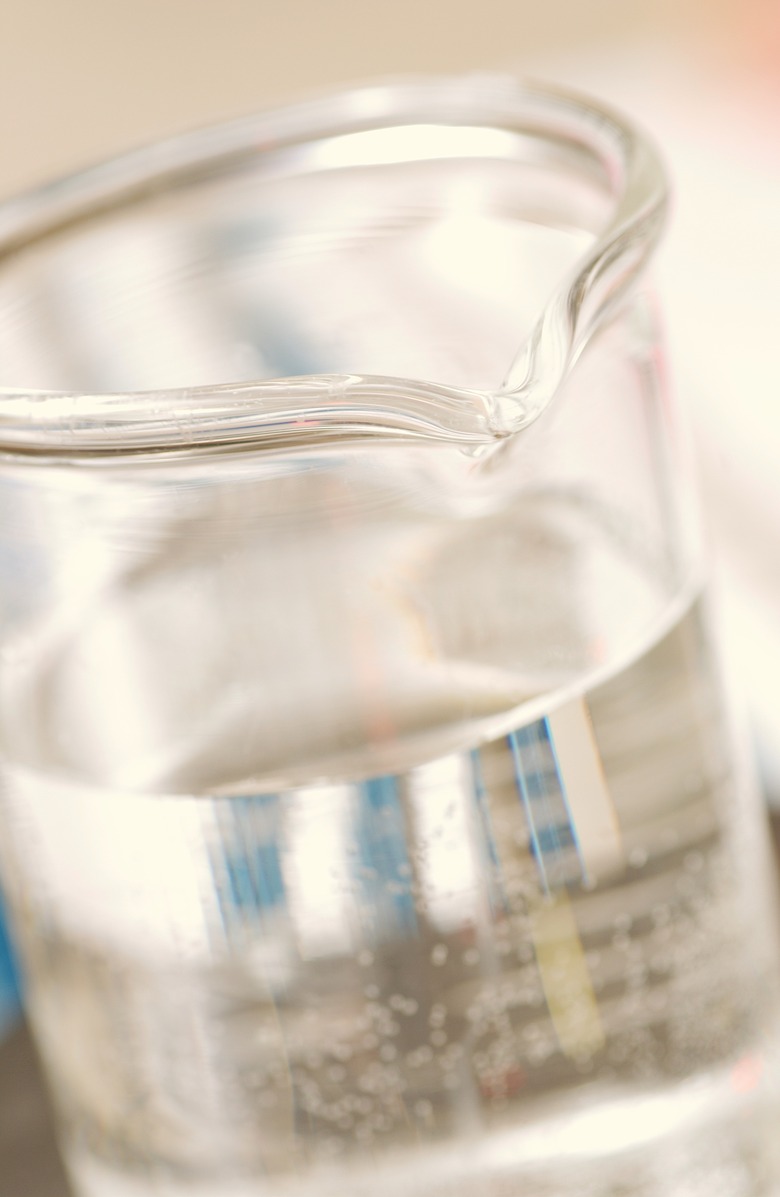How To Identify If A Solution Is Neutral, Base Or Acidic
A common task in chemistry labs is to identify whether a given solution is acidic, neutral or basic, which are determined by a solution's pH level. Depending on your laboratory's equipment and what information you are given, here are five ways to find out what type of solution you have.
What pH Tells You
What pH Tells You
A solution's pH will be a number between 0 and 14. A solution with a pH of 7 is classified as neutral. If the pH is lower than 7, the solution is acidic. When pH is higher than 7, the solution is basic. These numbers describe the concentration of hydrogen ions in the solution and increase on a negative logarithmic scale. For example, If Solution A has a pH of 3 and Solution B has a pH of 1, then Solution B has 100 times as many hydrogen ions than A and is therefore 100 times more acidic.
Take the Litmus Test
Take the Litmus Test
If your lab has litmus paper, you can use it to determine your solution's pH. When you place a drop of a solution on the litmus paper, the paper changes color based on the pH of the solution. Once the color changes, you can compare it to the color chart on the paper's package to find the pH. With unknown solutions, you should wear gloves, put on eye protection and work under a fume hood to be safe.
Probe for the Answer
Probe for the Answer
A pH meter will make short work of identifying the pH of your solution. These meters have a glass probe that measures a solution's ion concentration. To use a pH meter, place a small portion of your solution in a beaker or test tube, rinse the probe of the pH meter, and then place the probe into your solution. Within seconds, the readout will tell you the pH. After taking your measurement, rinse the probe again and place it back in its storage solution.
Memorize Some Solutions
Memorize Some Solutions
A few solutions are familiar liquids or are commonly used in science labs and it's handy to memorize what kind of solutions they are. Water and blood are both neutral. Many household cleaners, such as bleach and ammonia, are basic, as is sodium hydroxide. Citric juices, coffee and wine are acidic. Solutions with the word "acid" in them, such as stomach acid and hydrochloric acid are acidic.
Look at the Formula
Look at the Formula
Although it isn't a perfectly reliable way of identifying a solution, in some cases a solution's molecular formula can help you identify whether it is acidic or basic. Use this method if you have no other way to definitively identify a solution. If the solution's formula begins with H, such as HCl or H2SO4, it is usually acidic. If the solution ends in -OH, such as NaOH or KOH, it is often basic.
Cite This Article
MLA
Painter, Tammie. "How To Identify If A Solution Is Neutral, Base Or Acidic" sciencing.com, https://www.sciencing.com/identify-solution-neutral-base-acidic-8346/. 13 March 2018.
APA
Painter, Tammie. (2018, March 13). How To Identify If A Solution Is Neutral, Base Or Acidic. sciencing.com. Retrieved from https://www.sciencing.com/identify-solution-neutral-base-acidic-8346/
Chicago
Painter, Tammie. How To Identify If A Solution Is Neutral, Base Or Acidic last modified August 30, 2022. https://www.sciencing.com/identify-solution-neutral-base-acidic-8346/
